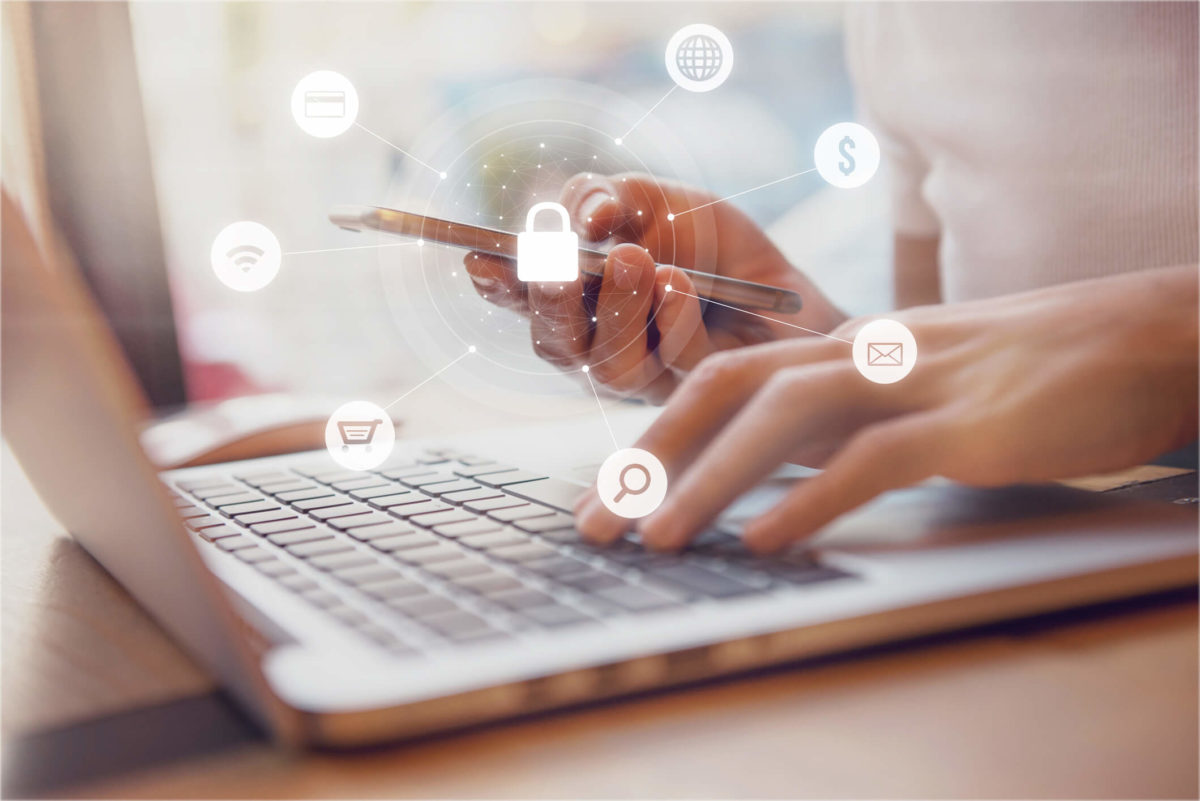Counterfeit credit card fraud is down 75% thanks to EMV chips, but that doesn’t reduce the need to protect your identity.

When credit card companies made the switch to EMV chip technology, the goal was to prevent fraud. Many customers grumbled about making the adjustment, but for most people, the new way of checking out with an EMV chip card has become standard. And the good news is that EMV chip technology seems to be doing its job. According to a new study released by Visa, counterfeit credit card fraud has dropped 75% from December 2015 to March 2018.
That’s good news for credit card companies and merchants that process payments. U.S. merchants have enjoyed a 46% drop in how much money they shell out due to counterfeit cards. However, while EMV chips may be bringing an end to counterfeiting fraud, it doesn’t mean that consumers can relax when it comes to taking steps to prevent identity theft.
The top 3 sources of credit card fraud
“EMV chips may have stopped identity theft that comes from counterfeiting cards, but consumers are just as likely to face fraud now as they were before EMV chips,” explains Gary Herman, President of Consolidated Credit. “As counterfeits have tapered off, new technology and new types of cybercrime have stepped in to fill the void. In other words, as theft protection technology evolves, cybercriminals find new ways to commit fraud.”
According to identity theft experts, these are the types of fraud consumers really need to worry about:
#1: Misuse of your account by someone you know
A common type of credit card fraud happens when a family member or someone with access to your account uses it without your permission or authorization. Basically, someone you know abuses your account and runs up big balances in your name. This is actually a type of financial abuse known as debt coercion.
#2: CNP transactions, such as online purchases
Counterfeiting protection with EMV chips only stops fraud on transactions where the card is present, like checkout lines. For “card not present” (CNP) transactions, EMV chips can’t stop fraud. These are any transactions where the merchant processes the card without seeing it, such as online transactions. Total fraud from CNP transactions has increased from $3.1 billion in 2015 to $6.4 billion in 2018.
#3: Data breaches

Data breaches happen when a company gets hacked, and there’s nothing that consumers can do to stop it. Even if you don’t shop at stores that have been breached before – which ranges from Target to the PlayStation Network – you’re still at risk. Last year Equifax got hacked, putting the personal credit information of over 43 million Americans at risk of identity theft. And there’s no way to opt out of credit reporting by a credit bureau. Even government websites can be hacked, leading to data breaches.
So, at least currently, there’s no good way to stop a data breach before it happens as a consumer. Instead, consumers must take steps to protect against identity theft by being vigilant and spotting potential signs of theft early.
5 ways to stop credit card fraud in its tracks
“Unfortunately, even if you take all the right steps to keep your accounts secure, credit card fraud can happen,” Herman says. “But there are steps you can take to catch fraud early and stop it in its tracks.”
1. Sign up for fraud protection with all your credit card companies
If your card offers fraud protection, use it! Many companies will send email or text alerts for suspicious purchases. If you respond promptly, you can stop fraud before they run your account up to the limit.

2. Set up account push notifications
Most smartphones allow you to enable push notifications from apps. If you use the apps provided by your credit card companies, you can set it up to alert you every time there’s a purchase on your card. That way, if you’re sitting at home and get a purchase notification, you basically catch fraud as it happens.
3. Review your credit report
According to CreditCards.com, 60% of credit card fraud is new account fraud. That’s when someone opens a new account in your name. In this case, the best way to catch it is to regularly review your credit reports. Check your reports to see if there are any accounts you don’t recognize. If so, contact the creditor immediately and report the issue to the credit bureaus.
4. Consider freezing your credit report
Starting September 21, 2018, all three credit bureaus will begin offering free credit freezes. That’s when you freeze your credit report so credit checks can’t be run without authorization. Freezing and unfreezing used to cost money, but now it’s free. So, you might want to be proactive and freeze your reports until you need to open a new credit line. Then you can unfreeze them while you apply for credit.
5. Sign up for free credit monitoring
As part of these new services, all three bureaus are also now offering free credit monitoring of their reports. This includes “dark web scans” which are supposed to scan the dark web to see if your data is listed. They alert you anytime they find something, so you can take extra steps to protect your information, such as changing passwords. Some credit card companies and banks also offer dark web scans for free. Find one you trust and sign up.